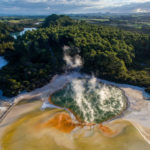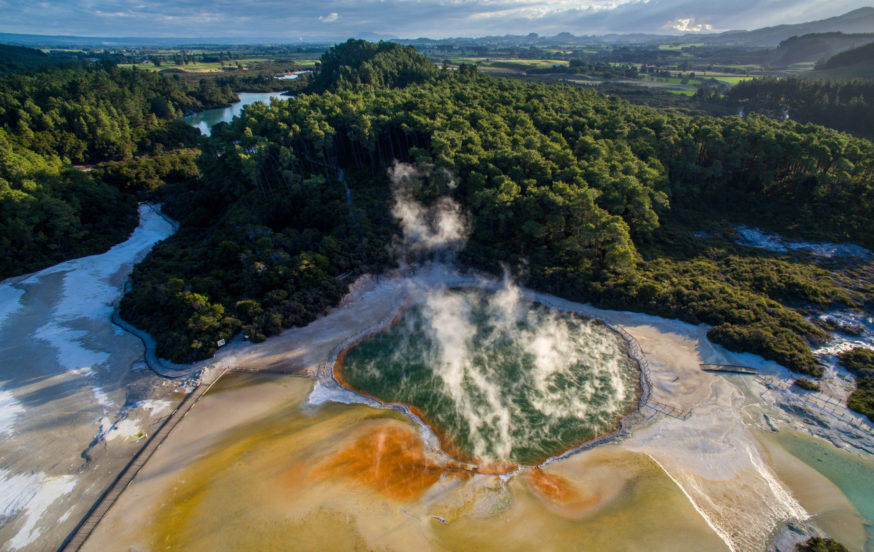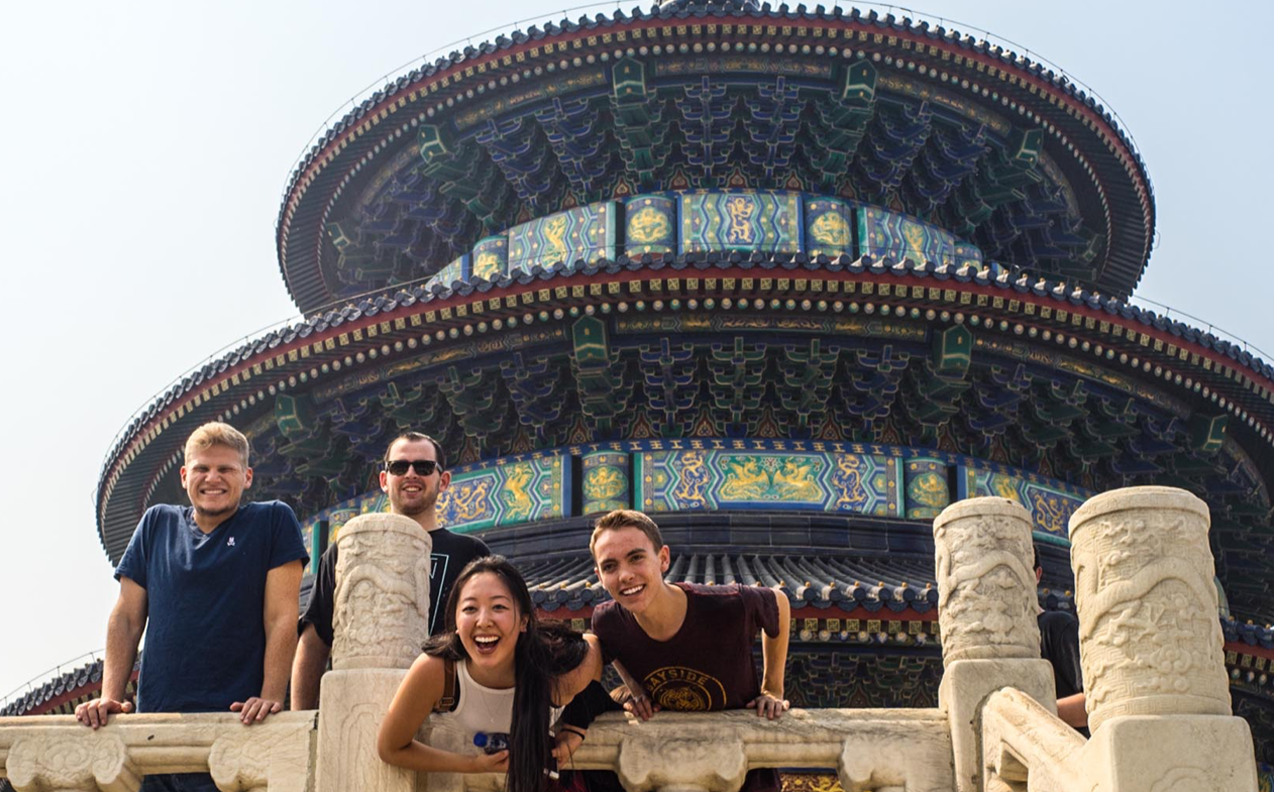Evoking images of rugged mountain ranges and ancient glaciers, New Zealand is the ultimate real-world classroom for geography students. The country itself is a remote collection of mountainous islands in the southeast Pacific Ocean. It’s still geographically young and going through the geological processes of mountain-building that began 15 million years ago. Sitting upon two tectonic plates, the landscapes in New Zealand are the obvious result of geological processes, in a constant flux between uplift and erosion.
Here, students explore environments and take part in learning activities which closely tie into many focus areas of Geography in the Australian Curriculum, such as the following sub-strands:
Curriculum Link: Landforms and landscapes
The landforms and landscapes curriculum area focuses primarily on the processes that shape landforms. There’s no better real-world environment to understand these concepts than New Zealand, providing opportunities for students to investigate a variety of geological formations, including mountain ranges of jagged exposed rock, glacial valleys, volcanoes and even lakes within volcanic craters.
The North Island is a true geothermal wonderland with a broad range of geothermal features which attract visitors from all around the world. Rotorua, in particular, is world-renowned for its geysers, mud pots and hot pools with unusual chemical and physical properties. Students examine these geographic characteristics and learn how they are linked to volcanoes and heat within the earth.
As they observe and analyse rare natural phenomenon, students gain an understanding of the impact of tectonic plates, erosion and other geographic processes that shape landforms and landscapes.
Curriculum Link: Place and liveability
The place and liveability curriculum area of geography investigates the factors which influence liveability and how communities are provided with the services and facilities needed to support and enhance life.
Queenstown, one of New Zealand’s most popular destinations, is a fascinating case study of place and liveability. Tourism has accelerated in this lakeside town on the South Island faster than the local community can develop the infrastructure needed to support it. The picturesque town is too beautiful for its own good.
Students can deconstruct the issues posed by growing crowds and uneven distribution of resources and services, and investigate how liveability can be improved through planning. Solutions that are already being rolled out can be evaluated, such as new areas for urban growth, new roads and new public facilities. These issues are the perfect case study to bring Place and Liveability lessons to life outside the classroom.
Curriculum Link: Environmental change and management
The environmental change and management curriculum area investigates the various causes and consequences of human-induced environmental change and proposes solutions to these consequences.
Near the centre of the South Island, students can explore the Tasman Glacier, New Zealand’s largest glacier, in small groups by boat. This provides an opportunity for students to get a first-hand look at the impact that environmental change has on our planet. Students will learn what is causing the glacier to melt and calve and the consequences that this has on other eco-systems.
Other geography focused learning activities in New Zealand
- See the effect that New Zealand’s only active marine volcano has on the surrounding environment as you join guides to learn about the geology of White Island, a magnificent live marine volcano.
- Visit the Wai-O-Tapu Thermal Wonderlands in Rotorua, New Zealand’s most colourful volcanic area. Here, the landscape has been gradually sculptured by volcanic activity, resulting in diverse natural features such as the Champagne Pool, the Primrose Terrace steaming ground and huge volcanic craters.
- Leave a legacy by planting a young native tree in the forest as part of the reforestation project in Waipoua. Your trees’ GPS Co-ordinates will be recorded so it can always be found.
- Learn about the evolution of life in the forest as part of a guided tour through the heart of the Waipoua forest.
- Soak up incredible alpine vistas as you zip-line through an ancient beech forest and learn about its history and conservation.
- Search for native wildlife and learn about an untouched ecosystem during the Milford Sound overnight cruise in this pristine World Heritage region.
- Visit the Te Anau Glow-worm Caves, a world-famous geological wonder, inhabited by thousands of glow-worms that together produce an extraordinary glittering display.
- Take an informative guided walk around the Fox Glacier and learn about the geographic processes that change this dynamic and powerful environment. Finish up with a rejuvenating dip in the Glacier Hot Pools.
- Enjoy a screening of Ata Whenua Fiordland on Film, giving you a spectacular aerial view of the extreme environments comprising the World Heritage Listed Fiordland wilderness.
- Discover how New Zealand’s rarest Kiwi birds are protected through conservation at the West Coast Wildlife Centre, against a backdrop of the stunning Franz Josef Glacier.
- Understand the effect an earthquake has on the urban environment in the Quake City tour in Christchurch.
A geography tour to New Zealand offers countless opportunities to reinforce classroom learnings and invigorate students’ passion for exploring the world around them.
For more information about our New Zealand geography tours, check out our North Island and South Island tour itineraries.



